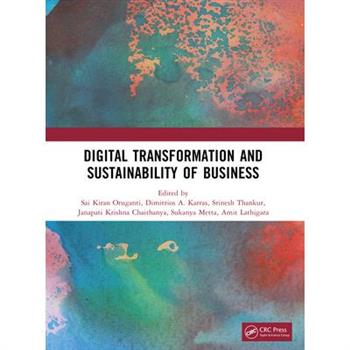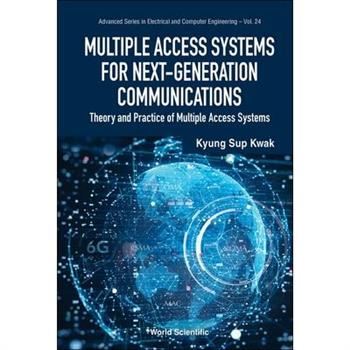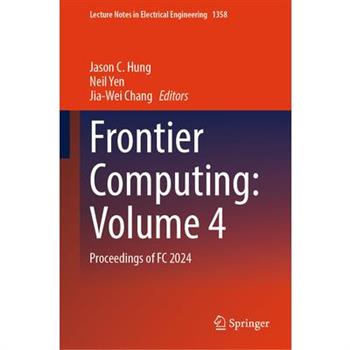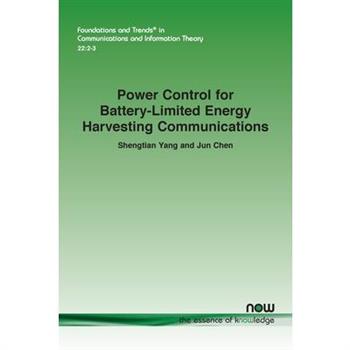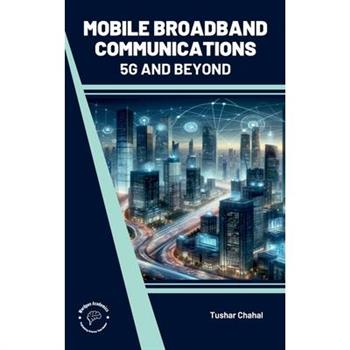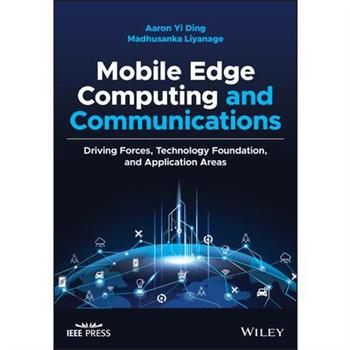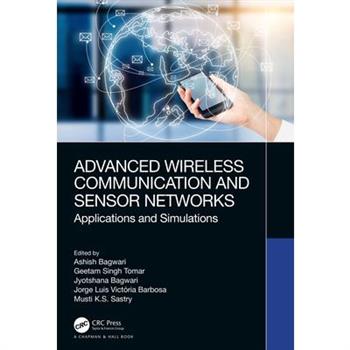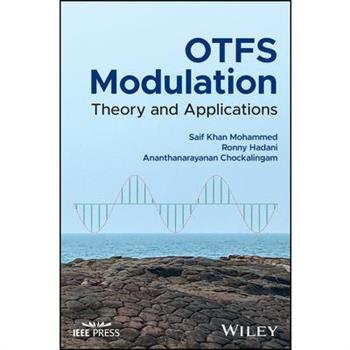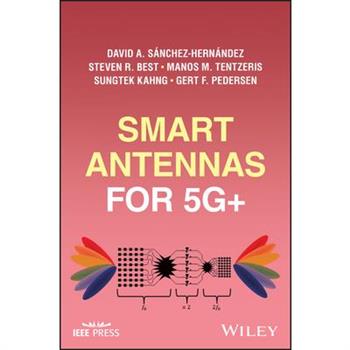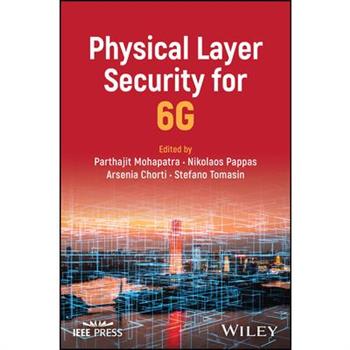Multiple Access Systems for Next-Generation Communications
This book provides a thorough examination of both traditional and emerging multiple access systems -- Non-Orthogonal Multiple Access (NOMA) and Rate Splitting Multiple Access (RSMA) -- essential for efficient and low-latency communication in the ecosystem of a Massive Internet of Things (Massive IoT). In particular, it discusses their potential role in enhancing 5G networks and their consideration as the standard for 6G multiple access.Geared towards postgraduate students and researchers, the book establishes the theoretical groundwork of conventional multiple access systems while delving into practical applications. Through a focus on NOMA and RSMA, it offers valuable insights into cutting-edge wireless communication research and development.
5g Fixed Wireless Access
This book explores the transformative potential of 5G technology in delivering high-speed broadband services through wireless means, particularly targeting underserved and rural areas. The book covers several key topics, including high-frequency spectrum bands, advanced transmission schemes, multi-connectivity, adaptive numerology, and Integrated Access and Backhaul (IAB). These elements are critical for enhancing network performance, increasing capacity, and reducing latency. High-frequency spectrum bands, such as those above 24 GHz, are essential for providing the necessary bandwidth to support high data rates and capacity. The book explains how these bands, while offering unprecedented peak rates, present challenges such as limited coverage and penetration, which are addressed through advanced technical solutions. Advanced transmission schemes, including massive beamforming and Multiple-Input Multiple-Output, are explored in detail. These technologies enable the efficient use of the spectrum by allowing multiple user terminals to be served simultaneously on the same frequency resources, thereby increasing the overall network capacity and improving user experiences. Multi-connectivity and adaptive numerology are also key topics. Multi-connectivity allows user equipment to connect to multiple network nodes simultaneously, improving reliability and performance. Adaptive numerology, defined in 3GPP Release 15, supports a flexible range of subcarrier spacing to cater to different services, quality of service requirements, latency needs, and frequency ranges. IAB is another significant topic covered in the book. IAB leverages the same spectrum for both access and backhaul, simplifying deployment and reducing costs. By using the 5G infrastructure to support backhaul, it eliminates the need for extensive fiber installations, making it easier to extend high-speed connectivity to remote and rural areas. These topics are crucial as they collectively address the limitations of traditional wired infrastructure, which is often costly and time-consuming to deploy in rural and hard-to-reach areas. By leveraging 5G Fixed Wireless Access (FWA), the book sets out to solve the problem of the digital divide, aiming to make high-speed internet more accessible and affordable. The relevance of these solutions is underscored by the growing global demand for reliable, high-speed internet access. As the book outlines, 5G FWA not only enhances broadband services but also plays a pivotal role in bridging the digital divide, ensuring that more people, regardless of their location, can benefit from the advancements in internet technology. This makes "5G FWA " an essential read for understanding the future of broadband connectivity and the strategic approaches needed to overcome deployment challenges. This book is intended to be a definitive guide for professionals, researchers, policymakers, and anyone interested in understanding the nuances and implications of this transformative technology.
Take control of your Android in 44 lessons
This book is a perfect tool for novices of Android phones, home repairers, and those who just want to enjoy a maximum of all its features! It is taking advantage of the community built on https: //phones.brain-start.tech and this booklet will guide you step by step through the discovery or repair of your phone.You will for example be capable to block a phone number, make a conference call, or even repair the screen glass of your Android
Future of Networks
This book provides a comprehensive discussion about the trends in network transformation towards intelligent networks and what the future holds for communication infrastructure. The author unveils the interplay of technologies and technological know-how that are shaping the industry. Delving into the evolution of networking infrastructures from static to dynamic and intelligent, this book explores how these advancements are enhancing user experiences, driving digital transformation in businesses, and revolutionizing the way the world connects. Covering trends in networking technologies, advances in SOCs, cloud networking, automation, network insights (telemetry and observability), container networking, network security, and AI infrastructure, readers will gain valuable insights into the cutting-edge technologies shaping the landscape of communication infrastructure. Whether you're a seasoned industry professional or a newcomer to the field, this book offers an invaluable resource for understanding the latest advancements and future directions in networking technology.
Fundamentals of O-RAN
Comprehensive reference on O-RAN technology, covering its history, architecture, security, ecosystem, and more, with didactic resources included throughout Discussing both basic and advanced concepts, Fundamentals of O-RAN delivers a comprehensive summary of O-RAN, covering its history, architecture, control loops and microservices (i.e., xApps and rApps), security, ecosystem, R&D initiatives, and challenges and evolution toward 6G. The book not only includes key theoretical principles of O-RAN, but also provides a framework for the reader to carry out guided hands-on exercises through online auxiliary materials. Homework problems and review questions are included in online auxiliary materials to reinforce learning. The book includes instructions on how to create xApps, which are expected to be one of the most promising aspects of O-RAN; for example, by working with an end-to-end O-RAN system using a network slicing functionality where the rApp provides slicing specified policies to the xApp which then allocates the base station's spectrum resources based on the slicing policy to each user (belonging to a certain slice). Readers will also gain an understanding of cellular networks, particularly radio access networks, software virtualization, and software-defined networking concepts, and the knowledge needed to design, build, and test a 5G O-RAN system. Some of the sample topics explored in Fundamentals of O-RAN include: RAN evolution from black box 4G RAN to software-based and virtualized RAN (vRAN) Components of the O-RAN architecture including SMO, Non-RT RIC, Near-RT RIC, O-CU-CP, O-CU-UP, O-DU, O-RU, and O-Cloud xApp design and prototyping from scratch using open cellular software, srsRAN and O-RAN Software Community (OSC) software. Examination of various security dimensions inherent in the O-RAN architecture. Testing and integration, covering Open Test and Integration Centers (OTICs), global PlugFests, certification and badging, and end-to-end test specifications Work Groups (WGs), including WG1 to WG11, and focus groups, with information on how to obtain WG specifications Fundamentals of O-RAN is an essential reference for the workforce of tomorrow's cellular industry, including graduate students, teachers, researchers, faculty members, engineers, and employees involved in the field of wireless networks, especially radio networks.
Satellite Communications and Networks
This textbook provides fundamental theory and application of satellite communications and networks in a format suitable for university students and professionals working in the field. The book first outlines the types of satellites and their uses, then goes on to cover satellite orbits and constellation design; satellite system architecture; air interface and physical layer; and integrated satellite-terrestrial networks. A thorough discussion on 5G and 6G non-terrestrial networking (NTN) is included. The book shows how and why satellites are playing a key role in supporting critical infrastructures of society, such as energy and telecommunication networks and different forms of traffic on roads, sea and in the air. The book also discusses threats to satellites and how cybersecurity plays a role. The book features end-of-chapter questions and exercises, homework problems including mathematical exercises and practice questions, PowerPoint slides, and a solution manual. The book is ideal for upper undergraduate and graduate students in telecommunications curriculum.
Privacy-Preserving Techniques with E-Healthcare Applications
This book investigates novel accurate and efficient privacy-preserving techniques and their applications in e-Healthcare services. The authors first provide an overview and a general architecture of e-Healthcare and delve into discussions on various applications within the e-Healthcare domain. Simultaneously, they analyze the privacy challenges in e-Healthcare services. Then, in Chapter 2, the authors give a comprehensive review of privacy-preserving and machine learning techniques applied in their proposed solutions. Specifically, Chapter 3 presents an efficient and privacy-preserving similar patient query scheme over high-dimensional and non-aligned genomic data; Chapter 4 and Chapter 5 respectively propose an accurate and privacy-preserving similar image retrieval scheme and medical pre-diagnosis scheme over dimension-related medical images and single-label medical records; Chapter 6 presents an efficient and privacy-preserving multi-disease simultaneous diagnosis scheme over medical records with multiple labels. Finally, the authors conclude the monograph and discuss future research directions of privacy-preserving e-Healthcare services in Chapter 7.
Mobile Broadband Communications
" Mobile Broadband Communications: 5G and Beyond offers a comprehensive exploration of the latest advancements and future trends in mobile communication technologies. This book covers the evolution from 4G to 5G networks and beyond, including the technical specifications, architecture, and capabilities of 5G systems. Additionally, readers gain insight into emerging technologies such as massive MIMO, millimeter-wave communication, network slicing, and edge computing, which are shaping the future of mobile broadband communication. Through theoretical frameworks, practical applications, and case studies, the book examines the potential impact of these technologies on various sectors, including telecommunications, healthcare, transportation, and smart cities. Whether you're a student, researcher, or industry professional, Mobile Broadband Communications: 5G and Beyond serves as a valuable resource for understanding the latest developments and future prospects of mobile communication technologies in the digital age."
Open RAN
Complete guide to identifying and describing basic Open RAN technology concepts and understanding the structure and dynamics of the ecosystem Open RAN describes key aspects and provides insight into the structure and dynamics of the Open RAN ecosystem, linking the key technology aspects to the market drivers and showing the role of technology in the ecosystem's progress. This book explores Open RAN cloudification techniques and deployment scenarios down to details of the RAN split options and use of hardware accelerators. Open RAN programmability for non-real-time operations (SMO, Non-RT RIC, A1) and real-time operations (Near-RT RIC, E2) are discussed alongside essentials of RAN control, network data collection, notifications of events, policy control, and network and service management. Examples of implementation by leading vendors and open-source communities are provided throughout to show the potential of the Open RAN ecosystem and technology. Written by an industry insider and a key contributor to the development of the technology, this book includes: Activities and structure of the O-RAN Alliance, including work groups, committees, and the O-RAN Software Community (OSC) Evolution of the Open RAN ecosystem, covering O-RAN specifications releases and compliant products, ongoing and planned developments, as well as ongoing and planned trials and commercial deployments SMO and Non-RT RIC functional procedures, A1 policy-based interface, rApps Near-RT RIC functional procedures, covering subscription, notifications, control, policy, and query procedures; E2 services, covering REPORT, INSERT, CONTROL, and POLICY services; Near-RT RIC as an xApps hosting platform Traffic steering, QoS optimization, NSSI resource optimization, and massive MIMO optimization, covering outer and inner control loops, network data collection, and optimization actions With a combined overview of key technology aspects and practical examples, Open RAN is a practical and highly useful reference for researchers, engineers, and marketing experts employed by mobile carriers, equipment vendors, government bodies, and universities, as well as professionals in associated communications fields and PhD electrical engineering students.
Hands-On Real Time Communications
Understand and deploy RTC protocols for any kind of communications system Since the emergence of Voice over IP (VoIP) communications in the late 1990s, a set of real time communication (RTC) protocols has evolved that together now support an immense range of technologies and systems architectures. Whether it's 5G networks (and beyond) or Internet of Things architectures, RTC protocols are indispensable to modern telecommunications. An understanding of these protocols and their design and deployment is critical for engineers, academics, and industry professionals in virtually every connected field. Hands-On Real Time Communications offers a thorough yet accessible introduction to this subject, incorporating both the theory and practical applications of RTC protocols. It offers detailed instructions for deploying RTC protocols on various types of network stacks, as well as the use of a huge range of speech, audio, and video codecs. Practice-oriented and designed for students as well as established professionals, it's a must-own for anyone looking to deploy and maintain essential communications architectures. Readers will also find: A matching hands-on section for each theoretical aspect, incorporating license-free protocol analyzers and emulation tools Detailed discussion of topics including signaling, media packetization, real hardware-based network interfaces, and many more End-of-chapter questions and lab exercises to facilitate learning Hands-On Real Time Communications is ideal for advanced undergraduate or graduate students in RTC communication and networking classes, as well as for engineers, technologists, and architects looking to learn and understand the principles of RTC networking.
Mobile Edge Computing and Communications
An up-to-dated and comprehensive guide to mobile edge computing and communications Mobile Edge Computing and Communications offers a practical guide to mobile edge computing and communications (MEC). With contributions from noted experts on the topic, the book covers the design, deployment, and operational aspects of this rapidly growing domain. The text provides the information needed to understand the mainstream system architectures and integration methods that have been proposed in MEC. In addition, the book clearly illustrates critical lifecycle functions and stages of MEC, and shows how to deploy MEC in 5G and beyond mobile networks. Comprehensive in scope, the book contains discussions on the challenges and opportunities of mobile edge computing and communications' concepts combined with the most relevant emerging applications and services. The authors provide insights for all relative stakeholders of mobile networks such mobile network operators. This important book: Offers the first book to provide a comprehensive walkthrough of mobile edge computing and communications Includes detailed analysis of current edge applications and technology foundation Presents information on driving forces and future directions of MEC Provides an authentic source of information from industry experts to drive the future of computingWritten for mobile network operators, ICT service developers, academic researchers, undergraduate and graduate students, Mobile Edge Computing and Communications offers a guide to the current and future of MEC that will enable a completely new paradigm for future computing and communications.
Principles of Data Transfer Through Communications Networks, the Internet, and Autonomous Mobiles
Understand the principles and practical basis of global telecommunications and data communications networks with this essential text. Our increasingly connected world is more reliant than ever on data transport and the communication networking technologies of the moment. Ever-expanding wireless communications and the Internet of Things have brought connectivity into more areas of our lives than ever before. Virtually every workplace and industry is now reliant at some level on data transfer. Principles of Data Transfer through Communications Networks, the Internet, and Autonomous Mobiles offers a comprehensive yet accessible overview of the principles and methods of computer communications and mobile wireless network systems. It's designed to equip a vast range of students and professionals with the necessary toolkit to manage data flows between and across network systems at various scales. Drawing upon decades of teaching and practical experience, it's a must-own resource for anyone looking to understand the core mechanics that power our world of mass communications. Readers will also find: Coverage of cutting-edge technologies such as autonomous vehicular highways that draw upon novel communications technologies Detailed discussion of design and performance behavior for major communication networking technologies Treatment designed for readers with no prior knowledge of computer science or programming Principles of Data Transfer through Communications Networks, the Internet, and Autonomous Mobiles is ideal for students in data communications, telecommunications and wireless networking technology courses, as well as professionals working in data communications industries or those who make use of data transfer communications networks as part of their work.
Foundations of Semantic Communication Networks
Comprehensive overview of the principles, theories, and techniques needed to build end-to-end semantic communication systems, with case studies included. In this rapidly evolving landscape, the integration of connected intelligence applications highlights the pressing need for networks to gain intelligence in a non-siloed and ad hoc manner. The traditional incremental approach to network design is no longer sufficient to support the diverse and dynamic requirements of these emerging applications. This necessitates a paradigm shift towards more intelligent and adaptive network architectures. From theory to application, Foundations of Semantic Communication Networks describes and provides a comprehensive understanding of everything needed to build end-to-end semantic communication systems. This book covers various interdisciplinary topics such as the mathematical foundations of semantic communications, information theoretical perspectives, joint-source channel coding, semantic-aware resource management strategies, interoperability under heterogeneous semantic communication users, advanced artificial intelligence (AI) and machine reasoning techniques for enabling connected intelligent applications, secure and privacy-preserving semantic communication systems, and the coexistence and interoperability of semantic, goal-oriented, and legacy systems. The book examines unique features of end-to-end networking with semantic communications, including instilling reasoning behaviors in communication nodes, the role of the semantic plane in information filtering, control of communication and computing resources, transmit and receive signaling schemes, and connected intelligence device control. It emphasizes the importance of data semantics and age of information metrics. The book also discusses the profound impact of semantic communications on the telecom industry, highlighting changes in network performance, resource management, traffic, as well as spectral and energy efficiency. Furthermore, the book provides insights into the mathematical constructs and AI theories for formulating semantic information, such as topology and category theory. It explores real-world applications, case studies, and future research directions as wireless technologies transition to 6G and beyond. Written by four recognized experts in the field with a wealth of expertise from academia, industry, and research institutions, Foundations of Semantic Communication Networks addresses sample topics, including: Proposing new formulations using rigorous mathematical frameworks such as category theory and algebraic topology Focusing on real-world scenarios, addressing multiple access and networking challenges through collaborative frameworks for multi-modal transmissions, examining multiple access schemes to enhance transmission efficiency, and ensuring coexistence with legacy systems Enabling efficient large-scale systems for 6G and beyond wireless systems through AI-native air interfaces and semantic-aware resource allocation strategies Utilizing causality and neuro-symbolic artificial intelligence for minimalistic transmissions, and achieving generalizability and transferability across contexts and data distributions to develop high-fidelity semantic communication systems Examining security vulnerabilities associated with deep neural networks in semantic communications, and proposing encrypted, privacy-preserving semantic communication systems (ESCS) as a solution Foundations of Semantic Communication Networks is an excellent forward-thinking resource on the subject for readers with a strong background in the subject matter, including graduate-level students, academics, practitioners, and industry researchers.
Text Mining
This popular book, updated as a textbook for classroom use, discusses text mining and different ways this type of data mining can be used to find implicit knowledge from text collections. The author provides the guidelines for implementing text mining systems in Java, as well as concepts and approaches. The book starts by providing detailed text preprocessing techniques and then goes on to provide concepts, the techniques, the implementation, and the evaluation of text categorization. It then goes into more advanced topics including text summarization, text segmentation, topic mapping, and automatic text management. The book features exercises and code to help readers quickly learn and apply knowledge.
Artificial Intelligence-Based 6g Networking
Artificial Intelligence-Based 6G Networking focuses exclusively on the upcoming sixth-generation (6G) network and services slated for implementation by 2030. It explores the paradigm shift that is 6G. It discusses the deep integration of computing and communication, supported by artificial intelligence (AI) across network elements like cloud, edge, and terminals. It also examines how AI-native interfaces will permeate various network components, from radio access networks to application servers and databases.Proposing a unified AI-enabled framework for optimizing networks and applications as a single integrated system, the book covers how network service providers can tailor network baselines, reduce noise, and accurately identify issues. The book delves into the potential of AI-driven networks to self-correct, predict, and rectify service degradations proactively, enhancing uptime and troubleshooting efficiency. It outlines the "Connection, Communication, Collaboration, Curation, and Community" framework to enhance network effects, aiding operators in automation, cost reduction, and providing optimal user experiences.Covering topics from MIMO and Massive MIMO to holographic communications, cybersecurity and quantum communications, the book explores cutting-edge technologies shaping the future of 6G networks. It anticipates a future where AI, along with machine learning and deep learning, enables continuous learning, self-optimization, and predictive maintenance, even with full automation, that will be the hallmark of a new era in network connectivity and innovation.
Deep Reinforcement Learning for Reconfigurable Intelligent Surfaces and Uav Empowered Smart 6g Communications
Reconfigurable intelligent surface (RIS) has emerged as a cutting-edge technology for beyond 5G and 6G networks due to its low-cost hardware production, nearly passive nature, easy deployment, communication without new waves, and energy-saving benefits. Unmanned aerial vehicle (UAV)-assisted wireless networks significantly enhance network coverage. Resource allocation and real-time decision-making optimisation play a pivotal role in approaching the optimal performance in UAV- and RIS-aided wireless communications. But the existing contributions typically assume having a static environment and often ignore the stringent flight time constraints in real-life applications. It is crucial to improve the decision-making time for meeting the stringent requirements of UAV-assisted wireless networks. Deep reinforcement learning (DRL), which is a combination of reinforcement learning and neural networks, is used to maximise network performance, reduce power consumption, and improve the processing time for real-time applications. DRL algorithms can help UAVs and RIS work fully autonomously, reduce energy consumption and operate optimally in an unexpected environment. This co-authored book explores the many challenges arising from real-time and autonomous decision-making for 6G. The goal is to provide readers with comprehensive insights into the models and techniques of deep reinforcement learning and its applications in 6G networks and internet-of-things with the support of UAVs and RIS. Deep Reinforcement Learning for Reconfigurable Intelligent Surfaces and UAV Empowered Smart 6G Communications is aimed at a wide audience of researchers, practitioners, scientists, professors and advanced students in engineering, computer science, information technology, and communication engineering, and networking and ubiquitous computing professionals.
Artificial Intelligence-Based 6g Networking
Artificial Intelligence-Based 6G Networking focuses exclusively on the upcoming sixth-generation (6G) network and services slated for implementation by 2030. It explores the paradigm shift that is 6G. It discusses the deep integration of computing and communication, supported by artificial intelligence (AI) across network elements like cloud, edge, and terminals. It also examines how AI-native interfaces will permeate various network components, from radio access networks to application servers and databases.Proposing a unified AI-enabled framework for optimizing networks and applications as a single integrated system, the book covers how network service providers can tailor network baselines, reduce noise, and accurately identify issues. The book delves into the potential of AI-driven networks to self-correct, predict, and rectify service degradations proactively, enhancing uptime and troubleshooting efficiency. It outlines the "Connection, Communication, Collaboration, Curation, and Community" framework to enhance network effects, aiding operators in automation, cost reduction, and providing optimal user experiences.Covering topics from MIMO and Massive MIMO to holographic communications, cybersecurity and quantum communications, the book explores cutting-edge technologies shaping the future of 6G networks. It anticipates a future where AI, along with machine learning and deep learning, enables continuous learning, self-optimization, and predictive maintenance, even with full automation, that will be the hallmark of a new era in network connectivity and innovation.
Advanced Wireless Communication and Sensor Networks
This book covers wireless communication, security issues, advanced wireless sensor networks (WSNs), routing protocols of WSNs with cross-layer solutions, emerging trends in the advanced WSNs, power management, distributed sensing and data gathering techniques for WSNs, WSNs security, applications, research of advanced WSNs with simulation results, and simulation tools for WSNs.Features: Covers technologies supporting advanced wireless communication systems, sensor networks, and the conceptual development of the subject Discusses advanced data gathering and sharing/ distributed sensing techniques with its business applicability Includes numerous worked-out mathematical equations and formulas, as well as essential principles including figures, illustrations, algorithms, and flow charts Provides pervasive background knowledge including both wireless communications and WSNs Covers wireless networks as well as sensor network models in detail This book is aimed at graduate students, researchers, and academics working in the field of computer science, wireless communication technology, and advanced WSNs.
Untethered
People are untethered-connected but no longer plugged in, living within their information."Mobile" is more than what's in your pocket. Today's users expect to be immersed in their digital experience, their information moving fluidly with them and adapting to various devices-smartphones, smart watches, cars, and even refrigerators-and levels of attention.This atmosphere creates multiple opportunities for brands to enhance their relationships with customers. In Untethered, Shawn Borsky reframes the possibilities enabled by the inevitable mobile-first future and introduces a new way of navigating your organization's digital presence. Learn how to use mobile design to customize consumers' experiences, anticipate their needs and wants, and adapt to users' changing memory and attention levels across devices. This guide will teach you how to connect with and hold on to today's untethered consumers.
Untethered
People are untethered-connected but no longer plugged in, living within their information."Mobile" is more than what's in your pocket. Today's users expect to be immersed in their digital experience, their information moving fluidly with them and adapting to various devices-smartphones, smart watches, cars, and even refrigerators-and levels of attention.This atmosphere creates multiple opportunities for brands to enhance their relationships with customers. In Untethered, Shawn Borsky reframes the possibilities enabled by the inevitable mobile-first future and introduces a new way of navigating your organization's digital presence. Learn how to use mobile design to customize consumers' experiences, anticipate their needs and wants, and adapt to users' changing memory and attention levels across devices. This guide will teach you how to connect with and hold on to today's untethered consumers.
Security and Privacy for 6G Massive IoT
Anticipate the security and privacy threats of the future with this groundbreaking text The development of the next generation of mobile networks (6G), which is expected to be widely deployed by 2030, promises to revolutionize the Internet of Things (IoT), interconnecting a massive number of IoT devices (massive IoT) on a scale never before envisioned. These devices will enable the operation of a wide spectrum of massive IoT applications such as immersive smart cities, autonomous supply chain, flexible manufacturing and more. However, the vast number of interconnected IoT devices in the emerging massive IoT applications will make them vulnerable to an unprecedented variety of security and privacy threats, which must be anticipated in order to harness the transformative potential of these technologies. Security and Privacy for 6G Massive IoT addresses this new and expanding threat landscape and the challenges it poses for network security companies and professionals. It offers a unique and comprehensive understanding of these threats, their likely manifestations, and the solutions available to counter them. The result creates a foundation for future efforts to research and develop further solutions based on essential 6G technologies. Readers will also find: Analysis based on the four-tier network architecture of 6G, enhanced by Edge Computing (EH) and Edge Intelligence (EI) Detailed coverage of 6G enabling technologies including blockchain, distributed machine learning (ML), and many more Scenarios, use cases, and security and privacy requirements for 6G Massive IoT applications Security and Privacy for 6G Massive IoT is ideal for research engineers working in the area of IoT security and designers working on new 6G security products, among many others.
Edge Computing Acceleration
Discover the latest advances in computer architecture and software at the dawn of the 5G/6G era In Edge Computing Acceleration from 5G to 6G and Beyond, distinguished researchers Dr. Patrick Hung, Hongwei Kan, and Greg Knopf deliver a comprehensive overview of personal computer architecture and software design usage in the upcoming 5G decade. The authors begin by introducing key components and exploring different hardware acceleration architectures. They move on to discuss 5G data security and data integrity and offer a survey of network virtualization technologies, including accelerated virtualization technologies. The book analyzes 5G/6G system performance, investigating key design considerations and trade-offs and introducing high-level synthesis flow. It concludes with chapters exploring design verification and validation flow, illustrations of 5G applications based on artificial intelligence and other emerging technologies and offering highlights of emerging 6G research and roadmaps. Readers will enjoy the combination of accessible descriptions of new technologies presented side-by-side as a step-by-step guide to designing effective 5G systems. The book also includes: A thorough introduction to key 5G/6G components, including new wireless communication protocols, edge and fog computing, acceleration technologies, IoE architectures, software-designed networks, network function virtualization, and data security Explorations of various hardware acceleration architectures, like FPGA and GPU acceleration architectures Practical discussions of 5G/6G data security, data integrity, and a survey of network virtualization technologies In-depth treatments of 5G/6G system performance, key design considerations, high-level synthesis flow, design verification, and validation flow Perfect for undergraduate and graduate students in programs related to communications technology, engineering, and computer science, Edge Computing Acceleration from 5G to 6G and Beyond is a must-have resource for engineers, programmers, system architects, technical managers, communications business executives, telco operators, and government regulators who regularly interact with cutting-edge communications equipment.
The Use of Information and Communication Technologies (ICT) in the Management of the Innovative and Smart City
Key elements in the formation of smart cities are development based on cooperation between local governments and business, the realization of sustainable development goals, the creation of social sustainability, the advancement of information and communication technologies (ICT) and the use of innovative solutions. The theories of information and communication have become the main driver of economic development in a globalized world and the information component plays a key role in building the competitive potential of countries and cities.The purpose of this book is to systematize knowledge about the practical application and importance of innovative solutions in the economic and social fields. An important aspect of this edition is the presentation of innovations applied in the field of conservation, not only of energy or environmental resources, but also of economic, social and spatial resources. We propose that this edition provides a knowledge base on the basic concepts of corporate social responsibility (CSR), formulating the important role of management in the context of CSR, smart management, smart economy and smart cities.The book is a comprehensive study of the smart city concept in its broadest sense, covering environmental, social and economic issues.It will be helpful to professionals in companies, in logistics departments and in the management teams. It can be useful for practitioners and analysts in the transportation industry to expand applications of ICT solutions. It will also be valuable to researchers, doctoral students of economics in management and entrepreneurship, logistics, as well as students at the advanced level, as it brings a range of valuable information that can serve as base material and reference for further research, programmes and studies.
Key enabling technologies for future wireless, wired, optical and satcom applications
This book presents the latest research roadmaps and achievements from the European ecosystem (industry, research, and academia) driving the development of future wireless, wired, optical and satcom applications utilising the mm-wave and sub-THz bands. It covers the entire value chain, including technologies, devices, characterisation, architectures, circuits, 3D heterogeneous integration and packaging.As the interconnectedness of our world continues to expand, the importance of global innovation in communication systems and technologies grows significantly. The increasing reliance on digital communication necessitates systems that can manage higher data traffic, provide faster and more reliable connectivity, and sustainably support a diverse range of applications. Achieving these goals requires a shift towards higher frequency bands (mm-wave and sub-THz) and the adoption of disruptive technologies. Heterogeneous integration of (Bi)CMOS, SOI, and III/V components such as GaN or InP, along with advanced packaging techniques, is essential to realise ubiquitous, ultra-high bandwidth, and low latency networks. To ensure that future communication systems are not only technologically advanced but also sustainable and responsible, it is crucial to minimize their environmental impact by considering the materials used, manufacturing processes, operational efficiency, and recyclability.The book captures the synergetic interactions between European Chips JU projects SHIFT and Move2THz, the European 3D heterogenous integration and packaging community and the MTT-TC9 society. These interactions were forged during the International Workshop on "Key Enabling Technologies for Future Wireless, Wired, Optical and Satcom Applications" at the European Microwave Week in Paris, France, on 22 September, 2024.Whether you are a professional in the field or simply interested in the future of communication technologies, this book offers invaluable insights into the technological breakthroughs shaping our digital future.The Open Access version of this book, available at http: //www.taylorfrancis.com, has been made available under a Creative Commons Attribution-Non Commercial (CC-BY-NC) 4.0 license.
Wireless Artificial Intelligent Computing Systems and Applications
The three-volume proceedings set LNCS 14997-14999 constitutes the refereed proceedings of the 18th International Conference on Wireless Algorithms, Systems, and Applications, WASA 2024, held in Qindao, China, during June 21-23, 2024. The 98 full papers and 10 short papers included in these proceedings were carefully reviewed and selected from 301 submissions. They focus on cutting-edge ideas, research findings, and innovative solutions in the dynamic intersection of wireless technologies and artificial intelligence (AI) computing systems.
Otfs Modulation
Grasp the future of wireless communication with this groundbreaking introduction Research and development are already underway on the sixth generation (6G) of wireless communication technology. The new requirements of 6G that arise from challenging new use cases render physical layer waveforms such as CDMA and OFDM inadequate. The OTFS waveform answers these new requirements, and recent research suggests it will play a decisive role in the future of wireless communication. OTFS Modulation - Theory and Applications provides the first ever foundational textbook that introduces this growing, state-of-the-art, field of research from first principles. Beginning with a thorough discussion of the fundamental principles of OTFS, both physical and theoretical, it rigorously situates OTFS modulation in a mathematical framework analogous to more familiar waveforms. The result is a groundbreaking contribution to communication theory and a must-have volume for wireless communication researchers. OTFS Modulation - Theory and Applications readers will also find: An expert author team including the inventor of OTFS modulation Detailed discussion of topics including the Zak theory of linear time-varying systems, delay-Doppler communication and radar sensing, machine learning, and many more Matlab code for OTFS transceiver implementation.OTFS Modulation - Theory and Applications is ideal for researchers, engineers, graduate and advanced undergraduate students, and standardization professionals working with wireless communication, signal processing, and radar sensing.
Wireless Artificial Intelligent Computing Systems and Applications
The three-volume proceedings set LNCS 14997-14999 constitutes the refereed proceedings of the 18th International Conference on Wireless Algorithms, Systems, and Applications, WASA 2024, held in Qindao, China, during June 21-23, 2024. The 98 full papers and 10 short papers included in these proceedings were carefully reviewed and selected from 301 submissions. They focus on cutting-edge ideas, research findings, and innovative solutions in the dynamic intersection of wireless technologies and artificial intelligence (AI) computing systems.
Wireless Artificial Intelligent Computing Systems and Applications
The three-volume proceedings set LNCS 14997-14999 constitutes the refereed proceedings of the 18th International Conference on Wireless Algorithms, Systems, and Applications, WASA 2024, held in Qindao, China, during June 21-23, 2024. The 98 full papers and 10 short papers included in these proceedings were carefully reviewed and selected from 301 submissions. They focus on cutting-edge ideas, research findings, and innovative solutions in the dynamic intersection of wireless technologies and artificial intelligence (AI) computing systems.
Soft Computing Applications for Advancements in Power Systems
This book discusses real applications of soft computing (SC) in power systems. These SC techniques, inspired by the human mind and biological behavior, have proven to be excellent tools to overcome the challenges faced in power systems and related areas. The techniques are robust and provide low-cost solutions while also offering an effective solution for studying and modeling the behavior of renewable energy generation, operation of grid-connected renewable energy systems, and sustainable decision-making among alternatives. The tolerance of SC techniques to imprecision, uncertainty, partial truth, and approximation makes them highly useful alternatives to conventional techniques. The rapid growth in SC techniques plays an important role in powerful representation, modeling paradigms and optimization mechanisms for solving power system issues such as power quality, reactive power control, oscillation and stability problems, renewable energy resource eval-uation, design of energy efficiency systems, economic load dispatch problems or very different energy system applications in smart grids.
Printed Antennas for Future Generation Wireless Communication and Healthcare
This proposed book focuses on the design and development of printed antennas along with modeling aspects for multifaceted applications. It further investigates imperfections in the manufacturing processes and assembly operation during the testing/characterization of printed antennas.This text- Discusses in a comprehensive manner the design and development aspects of printed antennas. Provides fractal engineering aspects for miniaturization and wideband characteristics of the low-profile antenna with high performances. Covers high gain printed antenna for Terahertz application. Showcases electrical modeling of smart antennas. Pedagogical features such as review questions based on practical experiences are included at the end of each chapter. The book comprehensively discusses fractal engineering in printed antennas for miniaturization and enhancement of performance factors. It further covers the modeling of electrically small antennas, circuit modeling, modeling of factual-based Ultra-Wide Band antennas, and modeling of reconfigurable micro-electromechanical system-based patch antennas. The book highlights performance metrics of multiple-input-multiple-output antennas. It will serve as an ideal reference text for senior undergraduate, graduate students, and academic researchers in fields including electrical engineering, electronics, communications engineering, and computer engineering.
Free Space Optics Technologies in B5G and 6G Era - Recent Advances, New Perspectives and Applications
The need for disruptive transmission approaches in emerging application scenarios has led to the convergence of free space optics (FSO) technologies with B5G and 6G transmission services. This book delves into the practical considerations of this integration and investigates FSO technologies to address the challenges in B5G and 6G scenarios. In addition, this book provides a foundational understanding of advances and perspectives in this field.
Artificial Intelligence in Wireless Sensors and Instruments
This book heralds a new era in instrumentation and measurements. It combines artificial intelligence (AI) and wireless communications technologies with instrumentation and measurement systems to function as a single unit. AI has advanced considerably due to deep learning utilizing artificial neural networks, availability of large and curated datasets, implementation of a new generation of fast processors having millions of transistors in chips, advanced algorithms, competitive commercial interests, and interests of governments to gain advantages. At the same time, new and highly advanced wireless technologies open new frontiers in communication systems, both technologically and in terms of applications aspects. Advanced technologies such as 5G and 6G networks enable easy use of communication systems by billions of people as well as by billions of machine-to-machine systems.In this book, the communication principles are explained and the implementation of AI on wireless networks is discussed. Many examples are provided. The author discusses instruments and instrumentation networks, modern sensors, and transducers in detail.AI is the technology humans have created where the machines do not only assist us but also think for us creatively in some cases, excelling humans thinking and reasoning. This book includes a chapter explaining how this is done, backed up with more than 50 figures. The security issues, fairness, efficiency, and social impact and acceptance of AI are highlighted. As explained in this book, AI and wireless communications are changing our lives in many ways, including entertainment, games, social interactions, medicine and healthcare, R&D, automated living, intelligent transport systems, finance and economy, and the Internet of Things.
Smart Antennas for 5G+
Comprehensive reference text for the development of advanced antenna systems for 5G and beyond Smart Antennas for 5G+ addresses the transformation that simple, conventional antennas have gone through to fulfill the complex and challenging performance expectations of 5G wireless communications and beyond. It also describes the 5G physical layer including the gNodeB, basics of the propagation channel, and user equipment (UE) specific antenna aspects. The authors present various broadband antennas covering mmW bands for 5G+ and B5G applications, explore recent developments in array calibration and plane wave generators, and consider future challenges for 5G+ radio system testing. Novel key performance indicators in which not only conventional RF parameters, but also other parameters and overall radio performance, are examined. The huge shrinkage which was prioritized in 4G modules are now combined with extremely versatile and precise beamforming capacities, thermal mitigation, and link budget compensation design strategies that bring antennas into a new era. As such, antenna integration, flexible and 3D printed elements, the use of metamaterials, and advanced testing of new features are key elements of this book. Additional topics covered in Smart Antennas for 5G+ include: Beamforming, beam-steering, power control, cell breathing, and many other 5G concepts that make the evaluation of a 5G antenna structure a complex process Multi-probe anechoic chamber, reverberation chamber, and wireless cable solutions, RF testing of the 5G antenna systems, and small-cell repeaters for 5G/B5G beamforming Powering and sensing applications in 5G+ printed electronic steerable antenna arrays for reconfigurable intelligent surfaces that stem from metasurfaces 3GPP/ITU standards and models for 5G MIMO base station antennas, propagation channel modeling, and link budget considerationsThe connection between complex but realistically used designs and the way testing has evolved to determine the value of novel designs makes Smart Antennas for 5G+ a must-have resource for advanced engineers as well as newcomers in the field of 5G wireless communications.
Spiritual Artificial Intelligence (Sai)
This unique book delves into the convergence of artificial intelligence (AI) principles--rooted in scientific knowledge and technological advancements--with the concept of spiritual wellness, exploring their significance in our increasingly automated and digitized world. The author offers a synthesis of two domains often perceived as distinct, appealing to both technologists and spiritual thinkers. Beginning with an exploration of the definitions and scope of "spiritual AI," the book encourages the quantification of spiritual wellness, illustrated through examples from current literature. It sheds light on the evolution of the spiritual quotient, presenting it as an integration of intelligence quotient (IQ) and emotional quotient (EQ), enhanced by dimensions of spirituality. The discussion spans various application domains and delves into the mind's entanglement-like phenomena, raising critical questions: Can a machine truly attain consciousness? How do spiritual wellness and quantum mechanics intertwine? The author invites readers to ask their own questions, contemplate the boundless possibilities of spiritual AI, and challenge existing paradigms.
IoT Signal Detection
Comprehensive reference covering signal detection for random access in IoT systems from the beginner to expert level With a carefully balanced blend of theoretical elements and applications, IoT Signal Detection is an easy-to-follow presentation on signal detection for IoT in terms of device activity detection, sparse signal detection, collided signal detection, round-trip delay estimation, and backscatter signal division, building progressively from basic concepts and important background material up to an advanced understanding of the subject. Various signal detection and estimation techniques are explained, e.g., variational inference algorithm and compressive sensing reconstruction algorithm, and a number of recent research outcomes are included to provide a review of the state of the art in the field. Written by four highly qualified academics, IoT Signal Detection discusses sample topics such as: ML, ZF, and MMSE detection, Markov chain Monte Carlo-based detection, variational inference-based detection, compressive sensing-based detection Sparse signal detection for multiple access, covering Bayesian compressive sensing algorithm and structured subspace pursuit algorithm Collided signal detection for multiple access using automatic modulation classification algorithm, round-trip delay estimation for collided signals Signal detection for backscatter signals, covering central limited theorem-based detection including detection algorithms, performance analysis, and simulation results Signal design for multi-cluster coordination, covering successive interference cancellation design, device grouping and power control, and constructive interference-aided multi-cluster coordination With seamless coverage of the subject presented in a linear and easy-to-understand way, IoT Signal Detection is an ideal reference for both graduate students and practicing engineers in wireless communications.
Computational Intelligent Security in Wireless Communications
Wireless network security research is multidisciplinary in nature, including data analysis, economics, mathematics, forensics, information technology, and computer science. This text covers cutting-edge research in computational intelligence systems from diverse fields on the complex subject of wireless communication security.It discusses important topics including computational intelligence in wireless network and communications, artificial intelligence and wireless communication security, security risk scenarios in communications, security/resilience metrics and their measurements, data analytics of cyber-crimes, modeling of wireless communication security risks, advances in cyber threats and computer crimes, adaptive and learning techniques for secure estimation and control, decision support systems, fault tolerance and diagnosis, cloud forensics and information systems, and intelligent information retrieval.The book: Discusses computational algorithms for system modeling and optimization in security perspective Focuses on error prediction and fault diagnosis through intelligent information retrieval via wireless technologies Explores a group of practical research problems where security experts can help develop new data-driven methodologies Covers application on artificial intelligence and wireless communication security risk perspective The text is primarily written for senior undergraduate, graduate students, and researchers in the fields of electrical engineering, electronics and communication engineering, and computer engineering.The text comprehensively discusses wide range of wireless communication techniques with emerging computational intelligent trends, to help readers understand the role of wireless technologies in applications touching various spheres of human life with the help of hesitant fuzzy sets based computational modeling. It will be a valuable resource for senior undergraduate, graduate students, and researchers in the fields of electrical engineering, electronics and communication engineering, and computer engineering.
Wi-Fi 7 in Depth
An essential guide for networking professionals responsible for implementing Wi-Fi 7 Join wireless networking experts Jerome Henry, Brian Hart, Binita Gupta, and Malcolm Smith on this deep dive into Wi-Fi 7 and 802.11be. The authors explore how to design and optimize your network to fully leverage Wi-Fi 7's new capabilities. You will learn in detail the inner workings of Wi-Fi 7 improvements like rTWT, puncturing, triggered uplink access, and SCS QC. You will explore the new possibilities of multi-link operations and learn why clients will come in five possible MLO modes that dramatically change the expectations you can have for their performances. You'll gain practical, real-world insights into protocol implementation and its effects on cell design, roaming efficiency, and overall network performance. This book is an invaluable resource for anyone who designs, manages, and optimizes wireless networks or works with 802.11, from network architects and wireless network administrators to network engineers and anyone whose job includes the need to face the Wi-Fi 7 wave or understand 802.11be and its challenges in depth. Whether you are new to IEEE 802.11 standards or looking to deepen your understanding of the latest wireless networking advancements, this book gives you the knowledge and expertise to stay ahead in the evolving Wi-Fi technology landscape. Includes a foreword by Matt MacPherson (CTO of Wireless, Cisco Systems) In this book, you will: Understand the foundational concepts of Wi-Fi and the 802.11be protocol Explore the challenges and balance of backward compatibility in Wi-Fi 7 development Learn about the enhancements introduced in Wi-Fi 6 and Wi-Fi 6E and their impact on 802.11be Explore the enhancements in transmission and reception techniques, channel structure and multi-user access management Learn about Multi-Link Operation (MLO) and its five different modes Understand Quality of Service (QoS) mechanisms and priority scheduling Examine site survey and network planning considerations specific to Wi-Fi 7 deployments
Radar High-Speed Target Detection Via Coherent Integration Transform
Radar High-Speed Target Detection via Coherent Integration Transform offers a systematic presentation of high-speed radar target detection methods using coherent integration transforms including the signal model, derivations of coherent integration transforms, and definitions of related key concepts.The authors present mathematical models and design principles necessary to analyze the behavior of each type of coherent integration transform, and based on this, they introduce and convey new approaches and techniques for designing such transforms, which will help to achieve efficient signal integrators and detectors, especially in the challenging low signal-to-noise ratio (SNR) environments.The book will be of interest to graduate students and engineering professionals in statistical signal processing, signal detection and estimation, and radar signal processing.
Millimeter Wave Communications in 5G and Towards 6G
This book explores different facets of millimeter wave systems, which form a central part of 5G systems. It explains how these systems serve as a foundational building block of 5G-Advanced/6G as these systems evolve.Millimeter Wave Communications in 5G and Towards 6G focuses on millimeter wave channel modeling, radio frequency (RF) and antenna level constraints imposed on beamforming, beamforming design for link level incorporating the RF/antenna constraints and the channel structure, as well as system level deployment considerations. With significant academic and industrial experience, the authors are well-equipped in explaining how the millimeter wave research developed, the fundamental principles/math beneath the technology, and in explaining precisely the "Why?" behind the "What?" that make the 5G-NR specifications. The authors examine point-to-point systems at a single link level and show how the traditional sub-6 GHz-based beamforming procedures simplify to a simplistic signal processing approach of directional beam scanning. This book examines the foundational background that led to specific choices in the millimeter wave part of the 5G-NR spec as well as chart out the roadmap in terms of future research and development activities in this arena. The book ends by providing a scope of future research in this area.This book is geared towards both introductory as well as advanced researchers in both industry and academia working in the areas of 5G, 5G-Advanced and 6G communications. It would also be useful for senior undergraduate and graduate students in universities focusing on wireless communications topics.
Channel Coding in 5G New Radio
This book provides a comprehensive coverage of major channel codes adopted since the 3rd generation of mobile communication. Modulation schemes suitable for 5G mobile communications are also described based on key New Radio application scenarios and performance requirements.It covers low density parity check (LDPC) codes, Polar codes, tail-biting convolutional codes (TBCC) and Turbo codes. Outer codes and a few advanced coding and modulations are also discussed. In addition, it includes detailed illustration of each channel coding scheme such as the basic code structure, decoding algorithms, performance evaluation and complexity analysis. The book offers insights on why and how channel codes are designed and developed in standardization organizations, which significantly facilitates the reading and understanding of the of 5G channel coding technologies. Channel Coding in 5G New Radio will be an essential read for researchers and students of digital communications, wireless communications engineers, and those who are interested in mobile communications in general.




